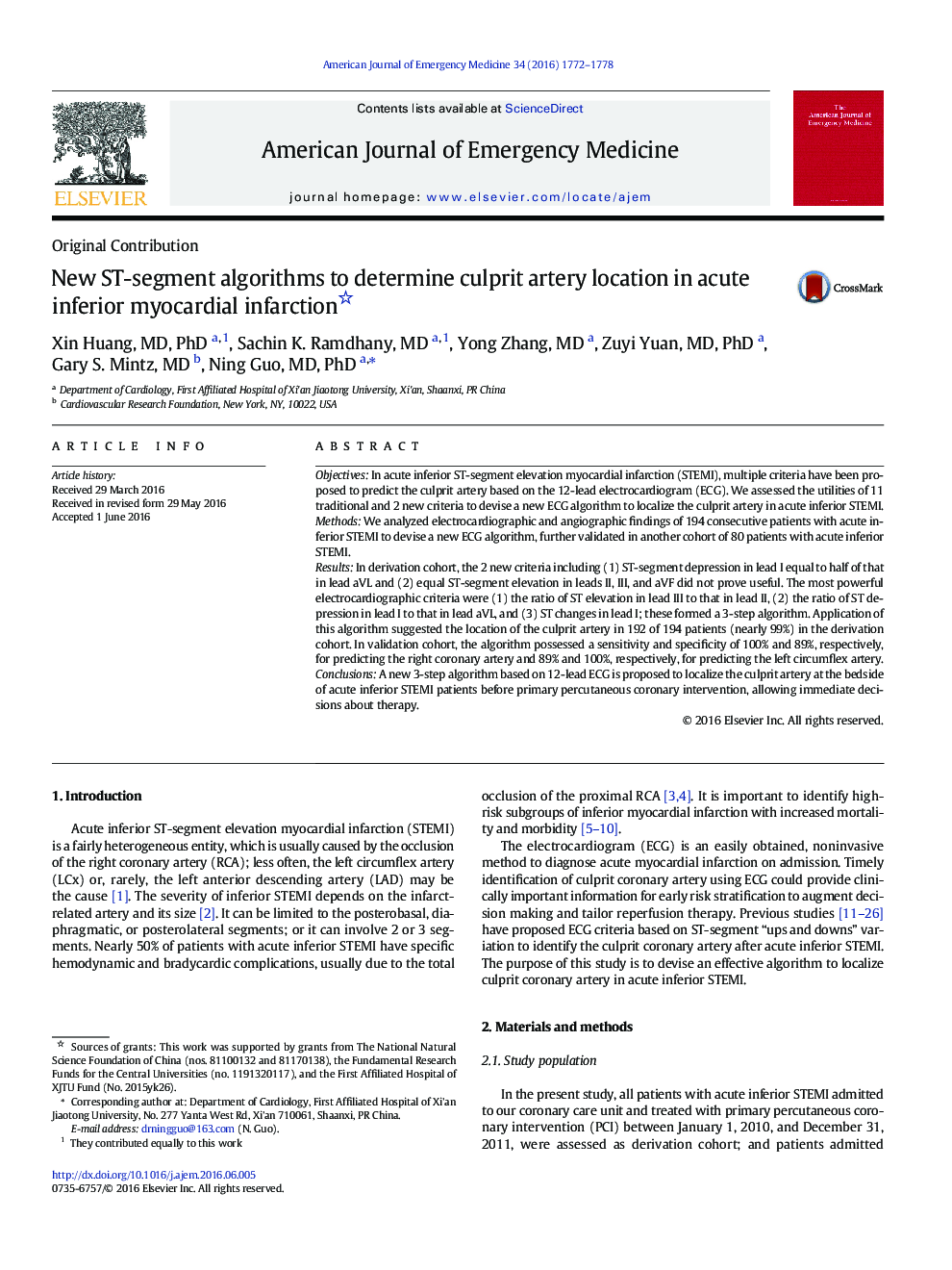| Article ID | Journal | Published Year | Pages | File Type |
|---|---|---|---|---|
| 3223022 | The American Journal of Emergency Medicine | 2016 | 7 Pages |
ObjectivesIn acute inferior ST-segment elevation myocardial infarction (STEMI), multiple criteria have been proposed to predict the culprit artery based on the 12-lead electrocardiogram (ECG). We assessed the utilities of 11 traditional and 2 new criteria to devise a new ECG algorithm to localize the culprit artery in acute inferior STEMI.MethodsWe analyzed electrocardiographic and angiographic findings of 194 consecutive patients with acute inferior STEMI to devise a new ECG algorithm, further validated in another cohort of 80 patients with acute inferior STEMI.ResultsIn derivation cohort, the 2 new criteria including (1) ST-segment depression in lead I equal to half of that in lead aVL and (2) equal ST-segment elevation in leads II, III, and aVF did not prove useful. The most powerful electrocardiographic criteria were (1) the ratio of ST elevation in lead III to that in lead II, (2) the ratio of ST depression in lead I to that in lead aVL, and (3) ST changes in lead I; these formed a 3-step algorithm. Application of this algorithm suggested the location of the culprit artery in 192 of 194 patients (nearly 99%) in the derivation cohort. In validation cohort, the algorithm possessed a sensitivity and specificity of 100% and 89%, respectively, for predicting the right coronary artery and 89% and 100%, respectively, for predicting the left circumflex artery.ConclusionsA new 3-step algorithm based on 12-lead ECG is proposed to localize the culprit artery at the bedside of acute inferior STEMI patients before primary percutaneous coronary intervention, allowing immediate decisions about therapy.
